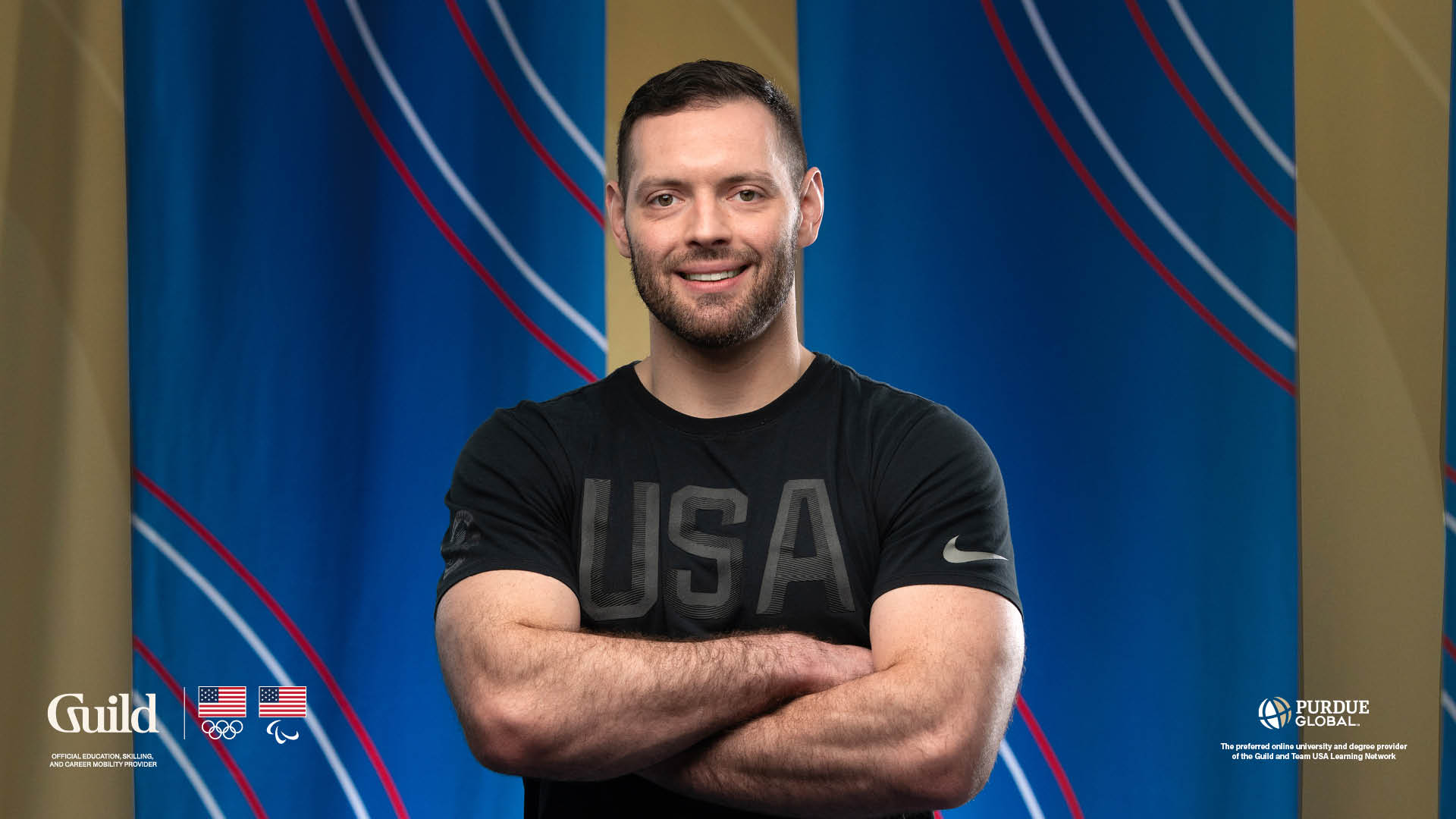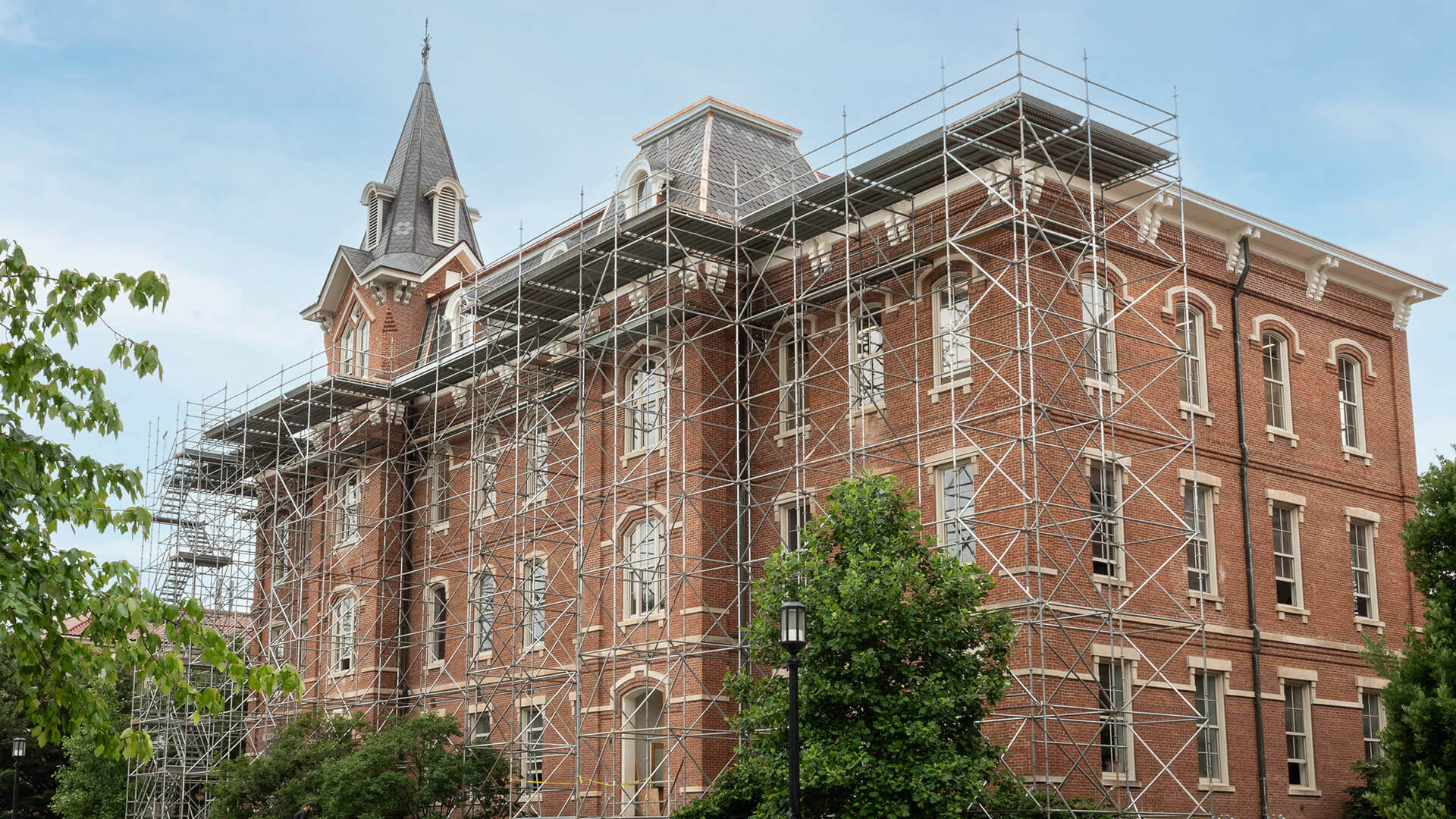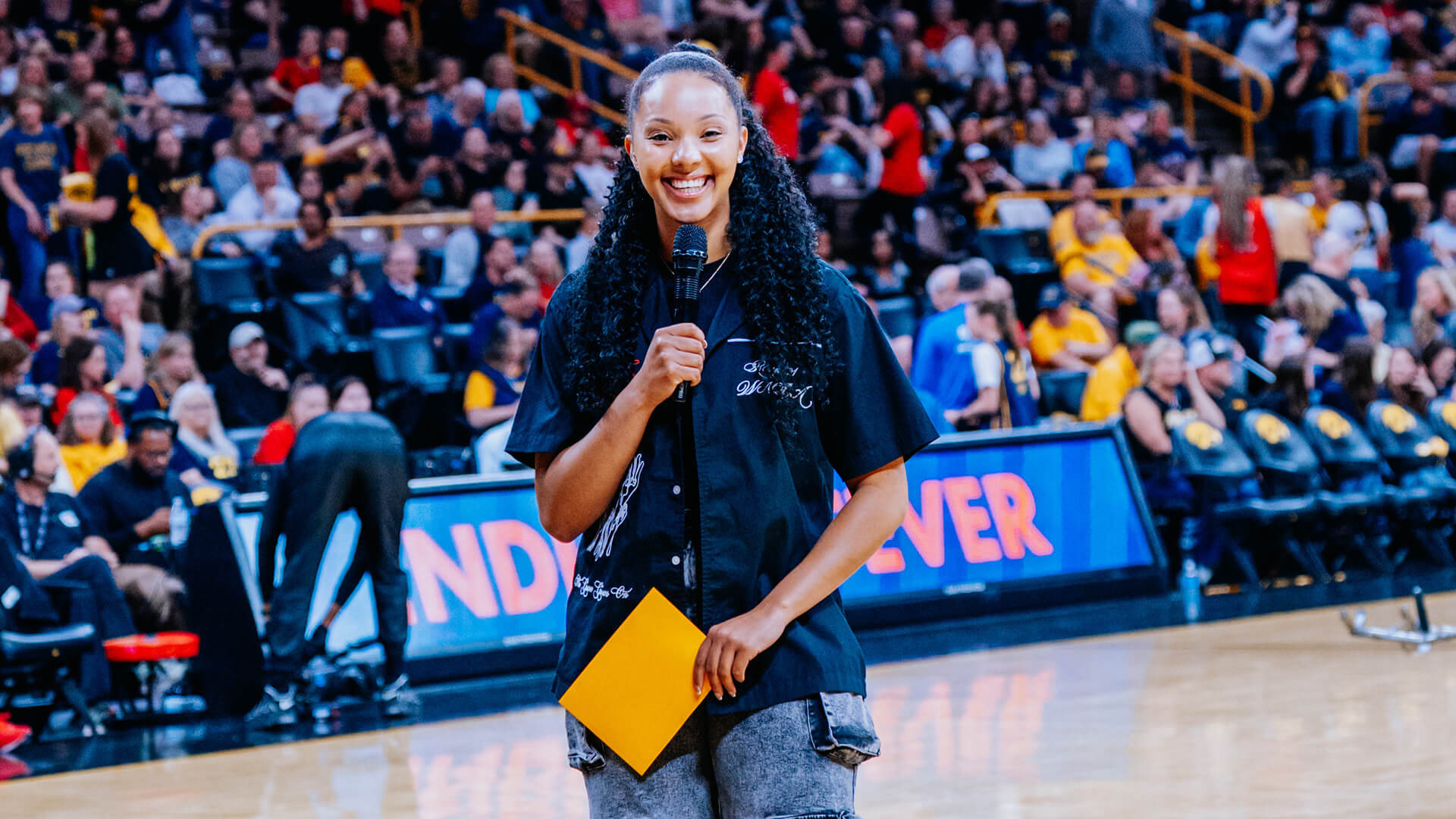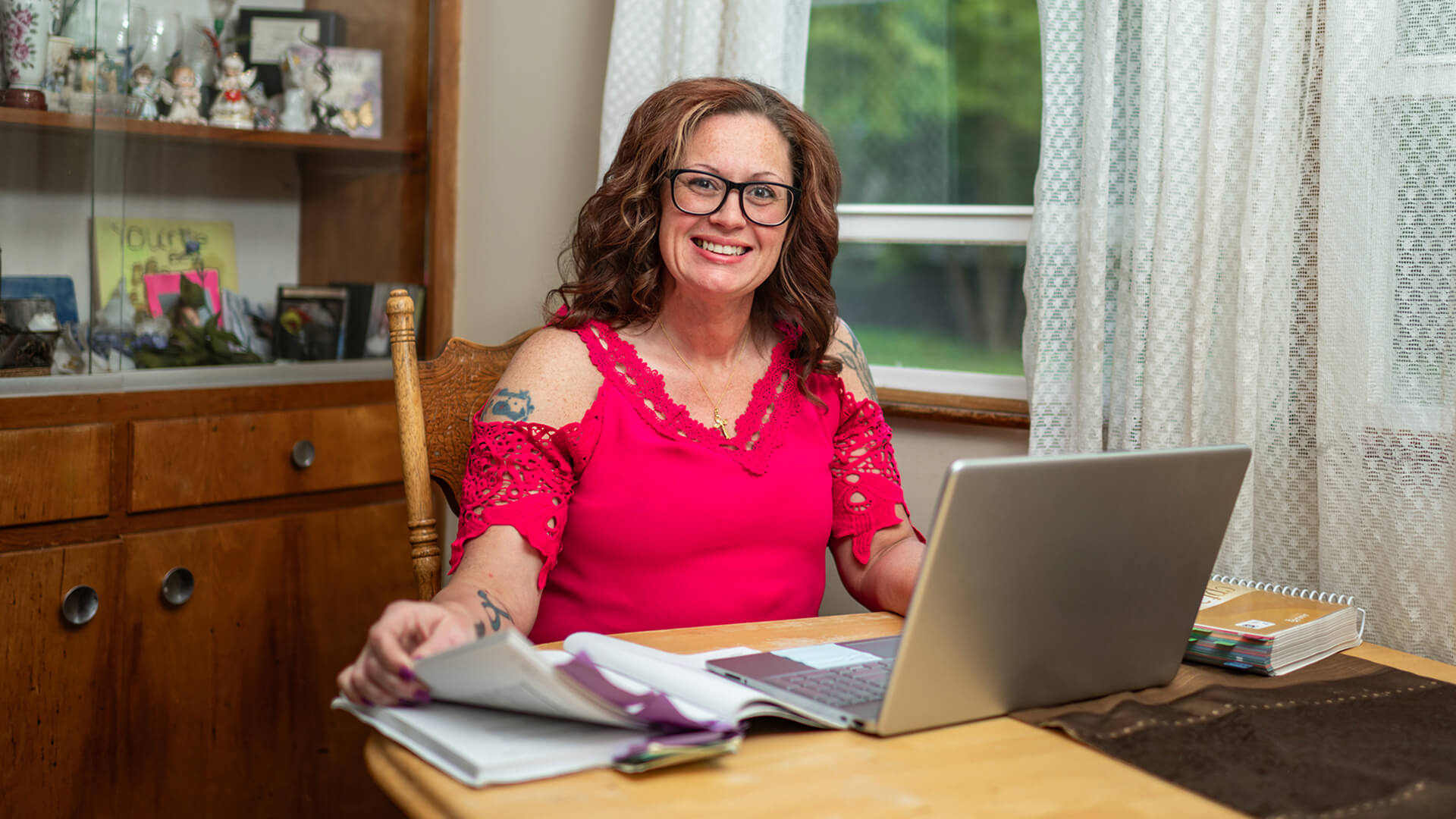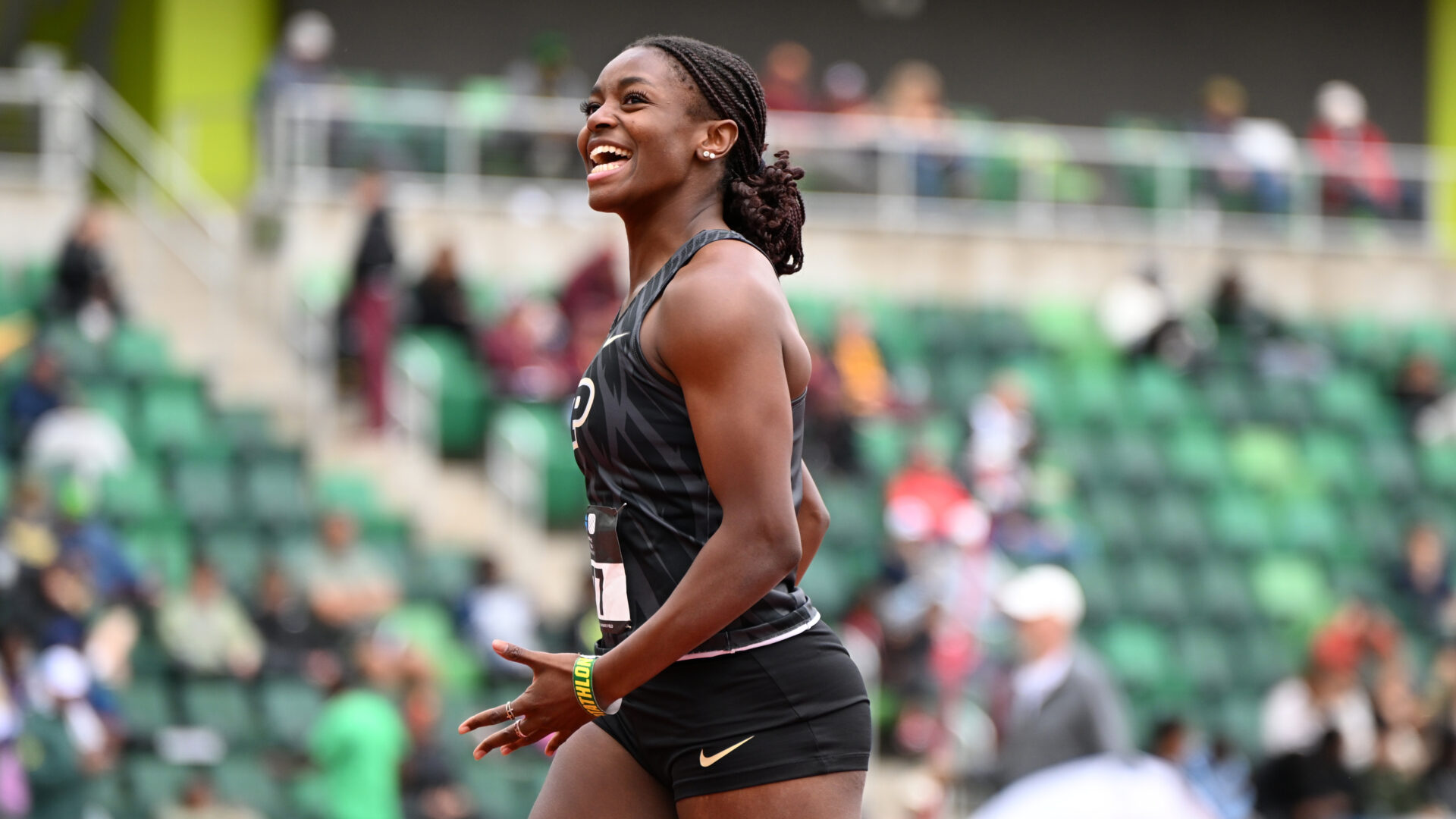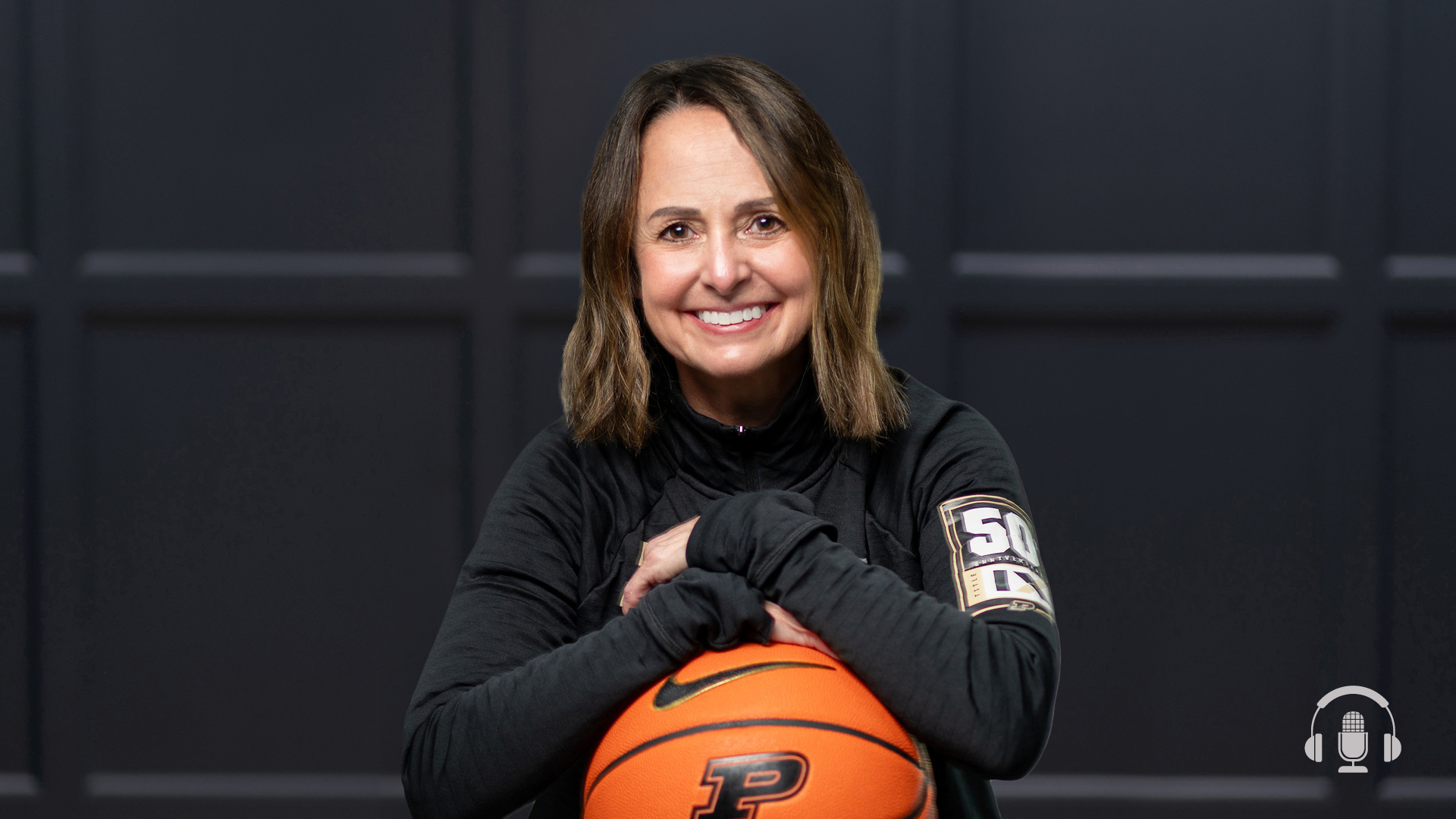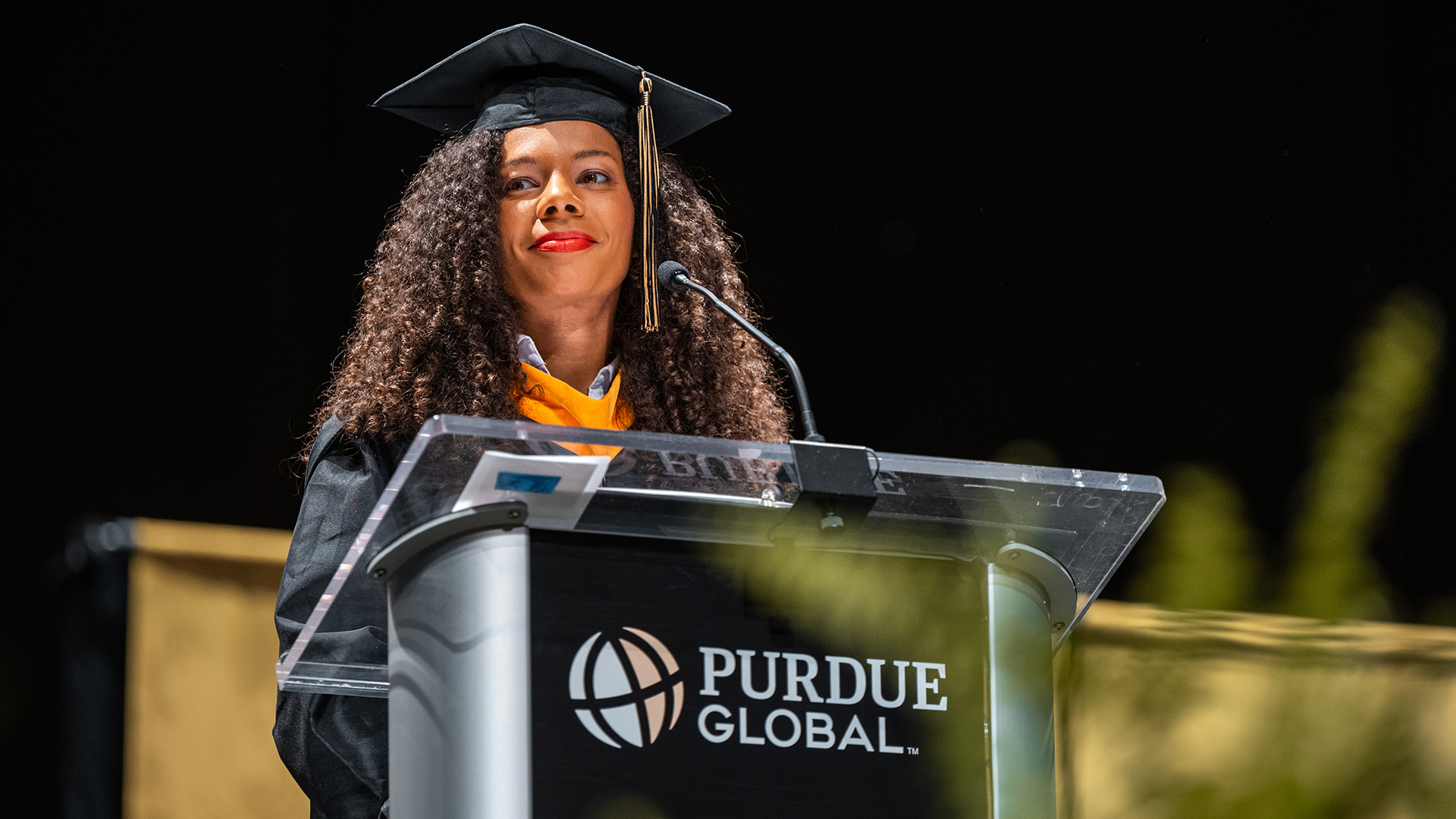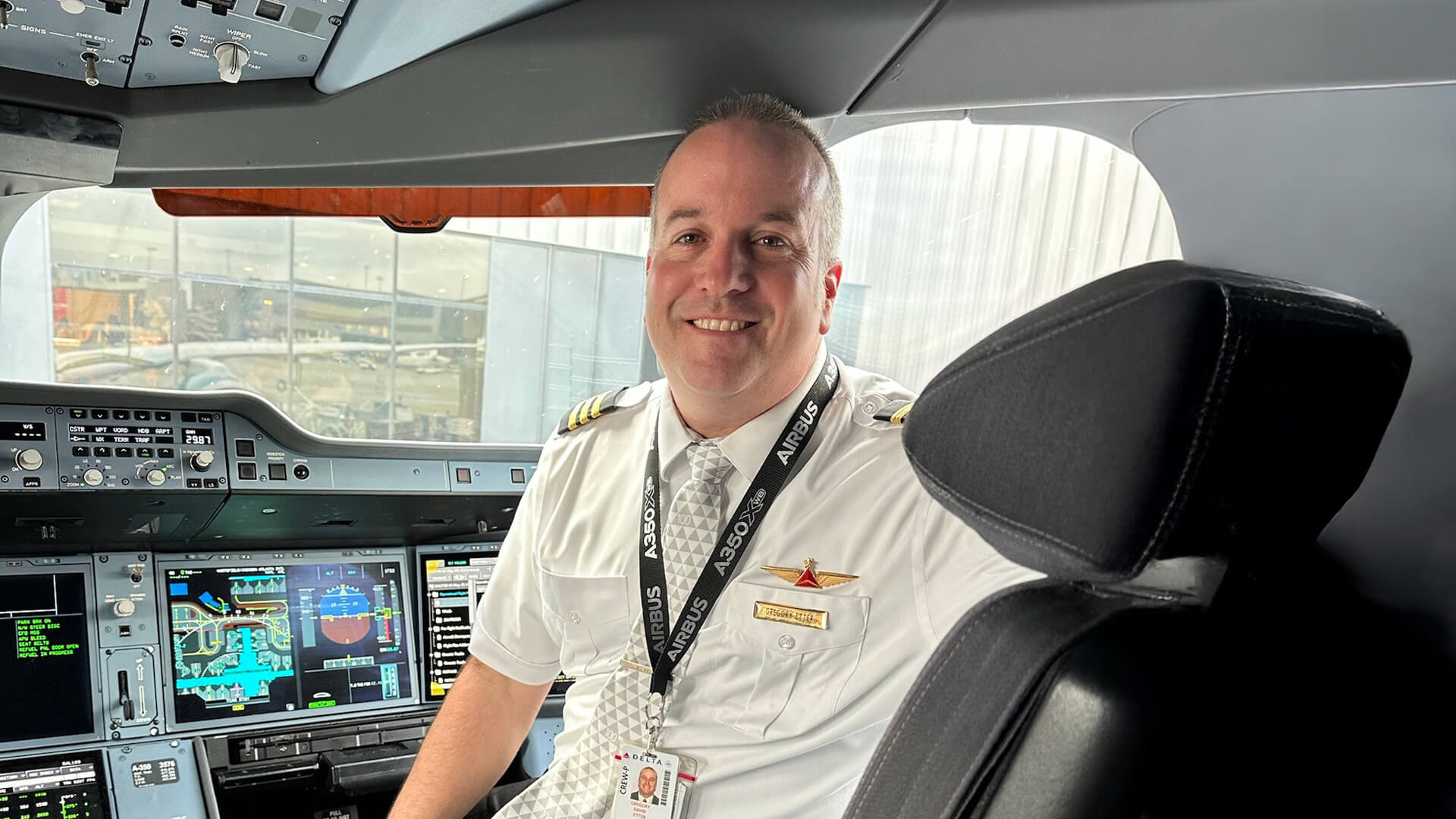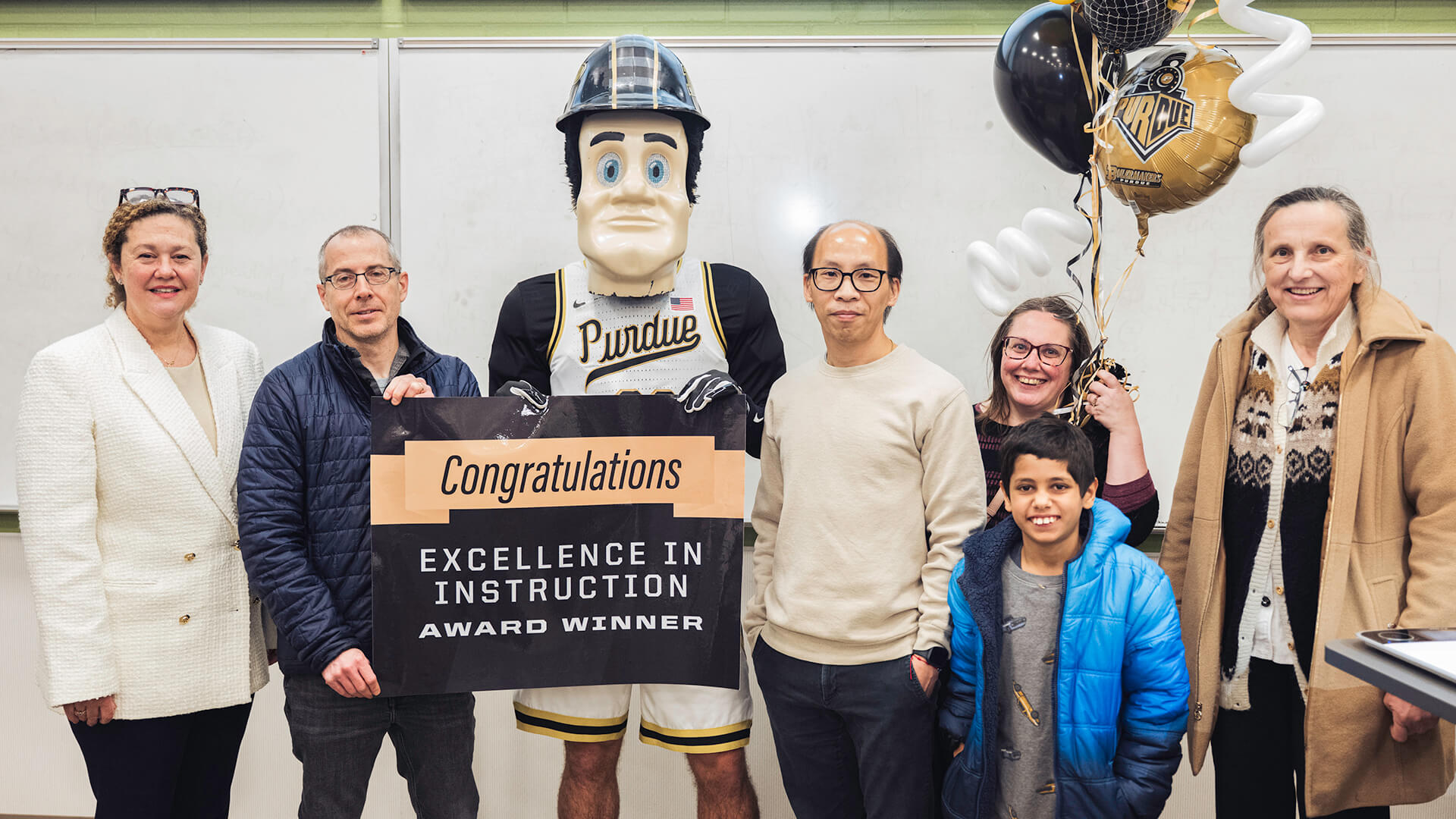Jacque’s Purdue Global story: A passion for community
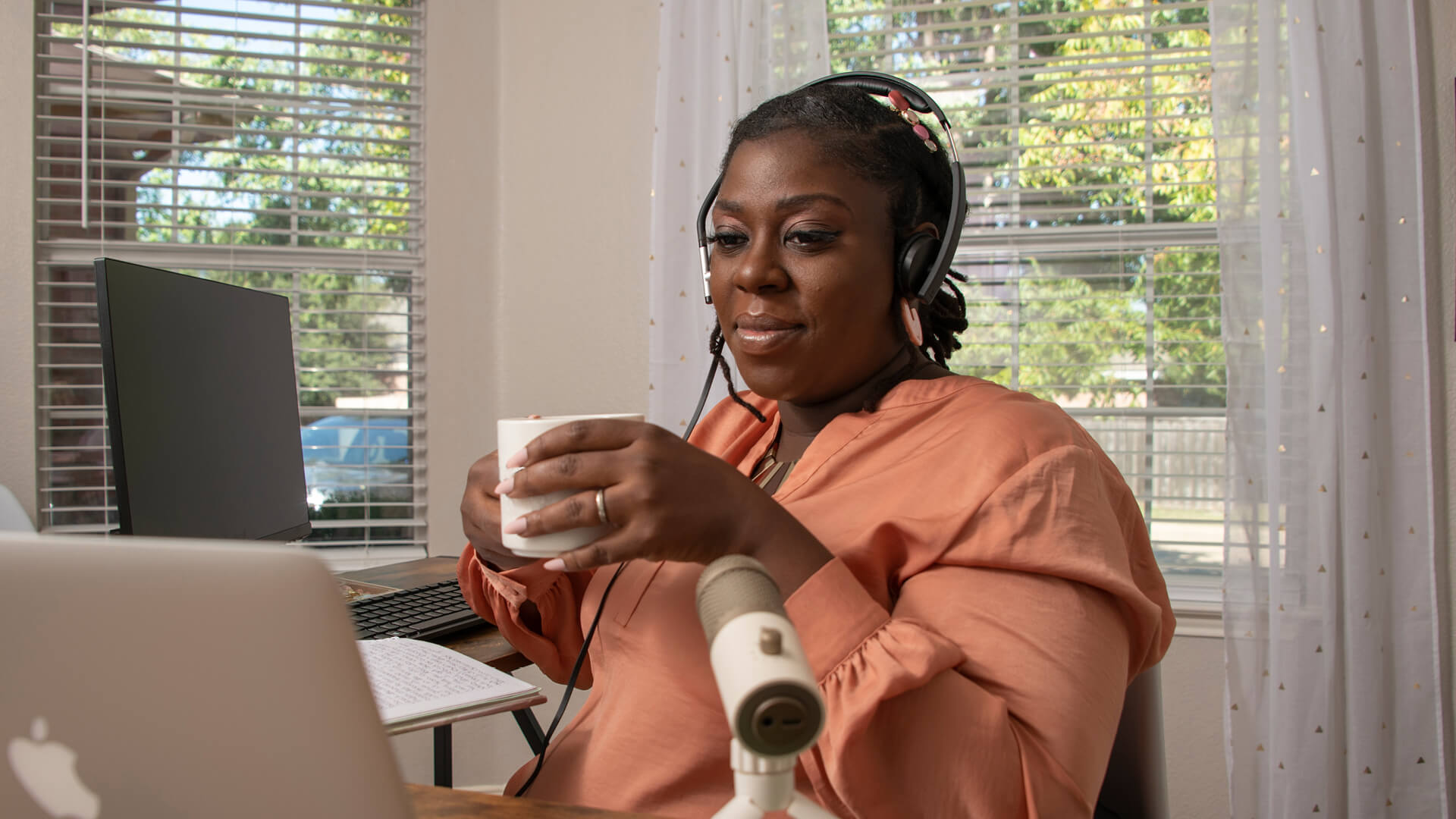
Today, Jacque works as a program analyst lead for the CDC Foundation. (Photo by Hillsman Stuart Jackson for Purdue Global)
Online learning with Purdue Global opens new pathways
My mom is a nurse, so service has been something I have been accustomed to since I was a kid. I still remember going to community events with her, helping with community screenings, doing blood pressure checks, talking to people and passing out flyers. I really believe that’s where my love of public health was born.
I was always a super-curious kid — very talkative, very creative. So that didn’t necessarily fit well in a traditional classroom. I never pegged myself as a school person. I considered myself a free spirit. But my mom and my dad knew that education was really the key to a lot of opportunities, so college was always in the picture.
Two years were going to pass whether I did something or not. I would rather look back and say, “I gave it a try,” versus just sitting there with regret.
JACQUE Yates
Purdue Global master of public health ’21
I went to Indiana State University, and I wasn’t really sure what I wanted to major in. They asked, “Well, what do you like to do?” And I was like, “Well, I like to shop.” So, I went to school for visual merchandising. And it was bearable; I was able to make it through.
I graduated right at the brink of the Great Recession in 2009, and nobody was hiring. My mom, the nurse, told me that health care is always hiring. So, I got a job in health care, working with insurance as a patient-experience coordinator.
I was able to help people by letting them know about different insurance opportunities and assisting with access issues — but I wanted to do even more. I started looking for more work in community programming, and that’s when I found out about Purdue Extension in Indianapolis.
I started working there as a nutrition advisor with their Nutrition Education Program. Basically, they go into the community and do nutrition education for various schools and community organizations. They do meal planning and things like that. I worked with the youth audience. I knew immediately that was what I was supposed to do. It was just my jam. I was super good at it. The kids absolutely loved me.
One day, I had a supervisor pull me to the side and say, “Hey, Jacque, you’re really good at this. Have you thought about getting your master’s? That’s something that’s offered as an employee benefit through Purdue Global.”
I told her I’m really not a school person, and it’s been about 10 years since I went to school. So that’s going to be a “no.”
At that point, I was working a full-time job, and I had a 3-year-old and a 6-month-old. It wasn’t the best time. But she kept on me and told me to at least give it a try. I thought about it, and I thought about it. I talked with my husband and kid, and everybody was telling me to give it a try. From my perspective, two years were going to pass whether I did something or not. And in two years, I would rather look back and say, “I gave it a try,” versus just sitting there with regret.
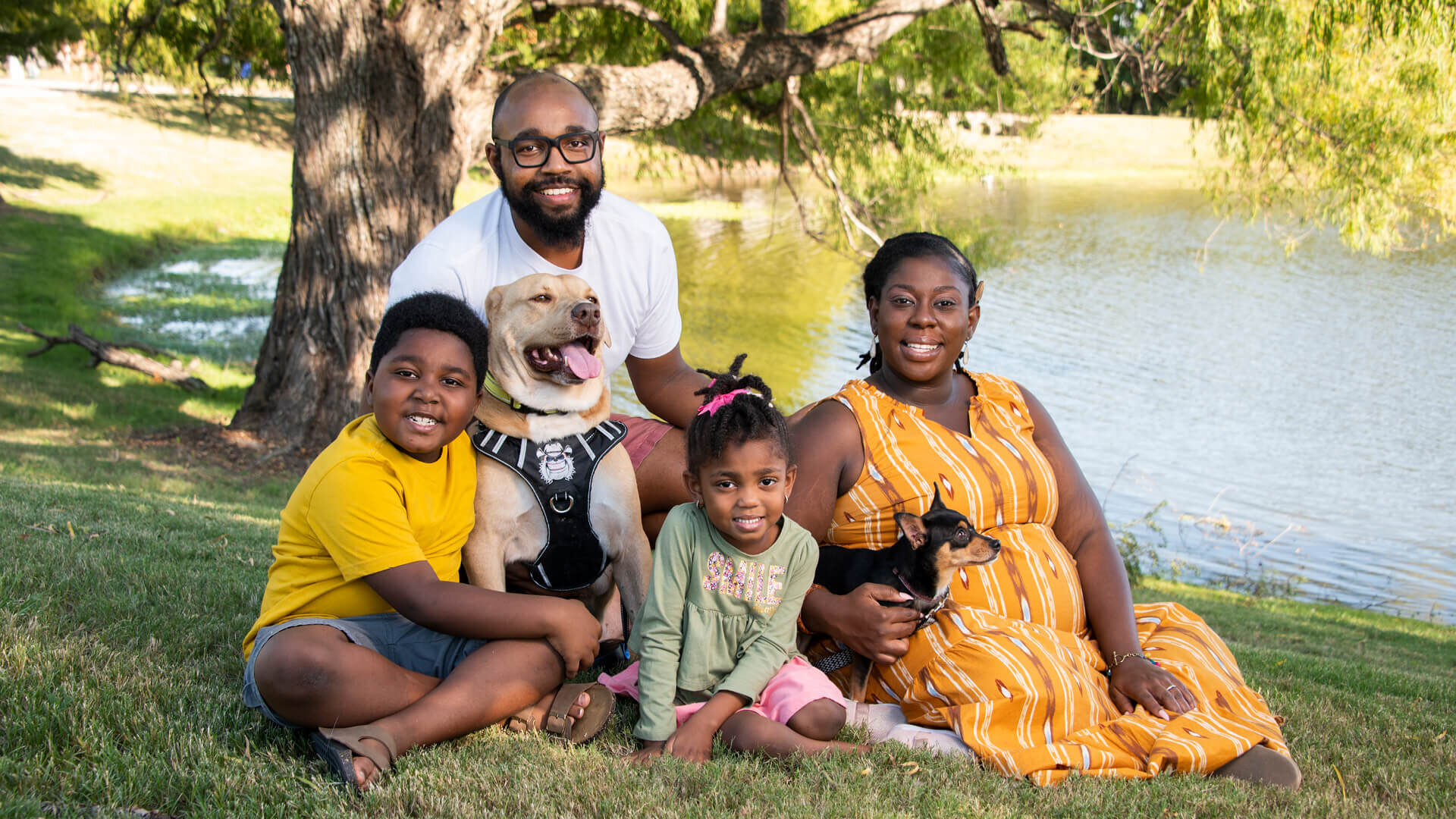
Waking up at 8 o’clock in the morning, sitting in a classroom, taking notes just wasn’t me. I needed something that allowed me to process the information, digest it and translate it in a way that I could make sense of it.
When I did my undergrad, I was barely doing enough so that I could finish and get out of there. I thought I wasn’t a school person, but as I continued my educational journey — my master’s and doctoral program — I realized it wasn’t me. It was the learning style that didn’t work for me.
So yeah, I struggled a bit in undergrad. And I believe that’s why I had such apprehension about going to school for my master’s — even though I found something I absolutely loved. I really didn’t want that undergrad experience again.
When I started my journey at Purdue Global, one of the things I loved is that the professors in my public health program didn’t necessarily have a specific way to do the assignments. We did have papers, but we also had projects that let you choose what medium would work for you as far as translating the information. Their goal wasn’t, “OK, let’s see if you can write an 18-page paper.” One of my professors in public health statistics told us, “Whatever medium you need to use to show me that you understand the material, you’re free to do that — whether it’s a paper or a podcast or an infographic. You choose.”
I no longer had to try to fit my creativity and my ideas into a box. I was able to say, “OK, I want to use an infographic, and I want to use visuals because I know that will capture people’s attention.
JACQUE Yates
Purdue Global master of public health ’21
I found so much liberty in that because I no longer had to try to fit my creativity and my ideas into a box. I was able to say, “OK, I want to use an infographic, and I want to use visuals because I know that will capture people’s attention.” For one class, I decided to record a podcast because I thought it would be interesting to have a conversation on the topic.
The faculty at Purdue Global encouraged me to be the best student I could be in a way that played to my strengths. There was no preconceived idea of what a student should be. There were papers and things like that, but there also was that freedom to use my own particular skill set to process the material.
The program format at Purdue Global laid a strong foundation for my work in public health and prepared me to go on to pursue a doctoral degree in education. I know that there is a certain way that I receive information — and I know that I’m just one person, and the world is filled with people who don’t receive information the same way I do. Understanding that concept has allowed me to thrive in my field because I am able to meet people where they are.
A big part of public health is access. We are challenged to look at people as individuals with different backgrounds. Whether that be their socioeconomic status, health literacy, whatever. There are so many different factors that go into people receiving information. One of the main pillars of the training that I received at Purdue Global was that when we are distributing information to the general public, we can’t have one specific audience in mind. We need to be able to communicate that information in a way that everybody in the room would walk away with a basic level of understanding.
One of the things I love about public health is that I don’t feel that I am pigeonholed into a specific area. My experience with Purdue Global taught me that my skills are very transferable.
I entered the program with the idea of being a youth nutrition educator and doing community programming, but I was then able to pivot in the middle of the pandemic and serve as an epidemiologist. Once that demand decreased, I transitioned to working as a program analyst with different initiatives in Texas.
The ability to identify other areas in public health where I could use the skills that I developed brought me to my work in maternal health with a focus on birth equity. In this space, I can advocate at a policy level to support African American women, who are currently dying at three times the rate of other races during or after childbirth. Sixty percent of these deaths are preventable.
These are not just statistics. This is my lived experience. When my son was 10 days old, I called the doctor’s office complaining about severe body aches and weakness, and they assured me it was all normal. “No, it’s fine. You just had a baby. Just get some rest.” My husband is in the medical field, and he could see that it was anything but normal and rushed me to the hospital. When we arrived, they discovered I was going into septic shock from an internal infection. I later found out that if I had not gone to the hospital, I would have died. This could have been avoided had I been provided antibiotics when I first started experiencing symptoms.
We briefly explored maternal health in my program at Purdue Global. That’s when I found out that what happened to me is a common thing. African American women have had these complaints, where we felt like something was off, but were convinced that everything was fine. And everything wasn’t fine.
I was like, “Oh, wait a minute, I have to do something about this.” The fact that I survived and was able to tell my story, I just felt like my life was preserved for a reason. So, it has been something that I have been researching and trying to see what policies we need to advocate for to really see a change to the maternal mortality numbers for African American women.
I want to make sure that nobody else has to share in this experience. If one woman is able to go home and be with her newborn baby and her partner doesn’t have to straddle between the joy of new life and the grief of loss then my story, my journey, my work has done what I know I have been called to do.
Today, I have my own maternal wellness company, where I educate community members and health systems about the disparities amongst African American women and provide them with tools and information to impact birth equity. One of the solutions that I’ve found is the use of doulas. Most of the childbirth-related deaths happening among African American women are preventable. Research shows implicit bias and lack of cultural competency as underlying factors. By embedding doulas in the birth process, they are able to provide more support as well as an extra set of eyes that could catch those preventable deaths.
My work includes trying to find different health systems that are open to this trial so that we can get more research, in hopes of getting more funding and getting health systems and insurance companies behind us. We’re at the point where a lot of insurance companies are covering doulas, but we have not gotten to the point where doulas are embedded in the health systems. With my research, I’m discovering different ways to eliminate those barriers so that we all can work together to support the birthing person.
We have to get some cultural competency and training. But first, we have to really acknowledge that this bias exists, which is an uncomfortable conversation. But if we can bring together the data with the personal stories of people like me, if we can put a face to the numbers to help you understand the stories and the people those numbers represent, then we can start changing policies and really make an impact.
